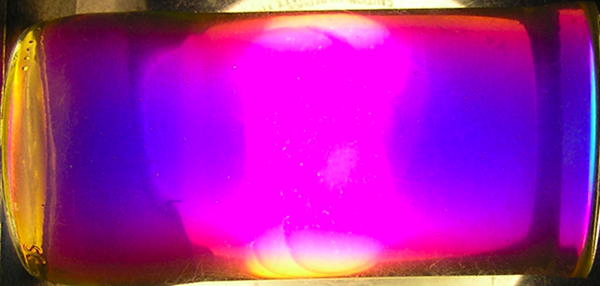Other Projects - Teaching Tools
Wii remote
When one of our graduate students (Ryan Balfanz) first told me about using the Wii remote data on a regular computer, I began by improving the DarwiinRemote software to be more useful as an accelerometer in the physics classroom. This is open source OS X software.
As I played with DarwiinRemote, it became clear to me that more substantial changes would make the wiimote more useful as a teaching tool. Our computer science department usually requests external projects for their students' senior assignments. I submitted a proposal and you can see the results of the work that the team did below and in a presentation I made at the SIUE library annual symposium.
Instructions, lab sketches, and precise location of accelerometer within Wii remote
You will need a computer with bluetooth (the same thing that's used for wireless keyboards, mice, and sync'ing to cell phones) and a remote for the Wii game system (you don't need the rest of the system).
- Connecting the remote to your computer
- bare-bones suggestions for experiments or activities or demonstrations
- more detailed experimental suggestions for a circular motion lab using the WiiExperiment software
- more detailed experimental suggestions for a collisions lab using the WiiExperiment software
- Wiimote split open showing the accelerometer chip is outlined in red. The chip is to the left of the A button when the remote is assembled for use.
- Software and a few more handouts
Physics PLAY
Portable Learning Activities for Youth
Bringing a Science Museum to You -- for Free
Portable Learning Activities for Youth
Bringing a Science Museum to You -- for Free
Physics PLAY is a collection of interactive, hands-on activities designed to be easily portable to area schools, community centers, etc. The object of the activities is to let people manipulate things and see how they work. Activities involve fluorescence, gravity, static electricity, angular momentum, light, and other topics. Each activity has an instruction card with suggestions for actions and questions on the front of the card and a brief explanation on the back of the card.
This is a list of materials as well as the content for the instruction cards.
Energy Bars
EnergyBars are an alternative to the Energy Bar charts. Energy bars make conservation of energy much more visually obvious and treat work always as moving energy or transforming energy from one form to another (kinetic to gravitational potential for example). The EnergyBar font makes writing tests, notes, examples, and solutions much faster and more accurate than it would be using simple drawing tools.
- a very quick primer on using EnergyBars to teach energy conservation
- a font for typing energy bars
- a quick tutorial on using and installing the EnergyBar font
Parallel Computing
An Early Mac Beolwulf-Cluster Prototype
partial instructions for creating a small Beowulf system on old Power Macs
Building a Portable Cluster
Inspired by Little Fe and a SC09 workshop I decided to get a few students together and build a smaller machine that would permit us to work with shared-memory parallelism, separate-memory parallelism, and using GPUs (graphics cards) for general computations. My first draft of the design used the low-power Atom chip. However, further investigation raised our suspicions that it would be a very slow chip so we decided to forgo the low-power restriction and see how fast a chip we could afford to put in a small computer. As of Dec. 2009, the first four nodes are assembled and installed in an open frame. The whole things weighs less than 20lbs and occupies half the rectangular dimensions currently permitted by airlines as carry-on luggage. I am working (as time permits) on installed a BCCD-based system that will boot all four nodes from one hard drive. Eventually, I may build a second set of nodes that could be connected to the first set to create an 8-node (32-core) machine. Soon this will be my sole number-crunching machine, so I need to get it functional.
Standing Sound Wave movie
A movie I made several years ago to show the relationship between pressure and displacement nodes for standing sound waves.
VPython simulations
In Fall 2009, I decided to start playing with VPython as a teaching tool for my introductory physics classes. My vpython page is what I have done so far. These simulations vary in how good their internal documentation is and how complex they are. In all cases though, it should be instructive to examine the core physics in the code that produces the simulations in addition to using the simulations themselves.
For information about VPython, visit the VPython home page. There you will find out why it exists, what it can do, more examples, and how to install it on your computer and use it.
GeoGebra simulations
In Spring 2010, I started using Geogebra to illustrate some mathematics ideas as well as some physics concepts. My GeoGebra page catalogs my projects so far. Both the GeoGebra files and interactive html exports are linked there.
For more information about GeoGebra, visit the GeoGebra home page.
